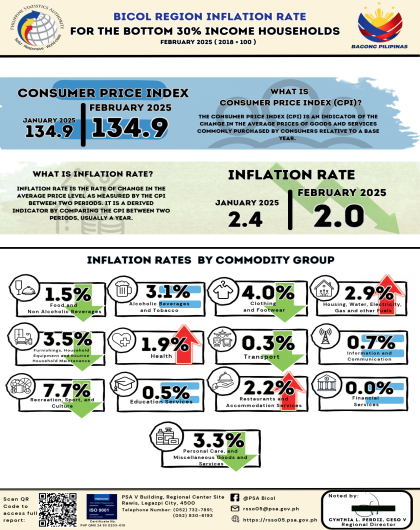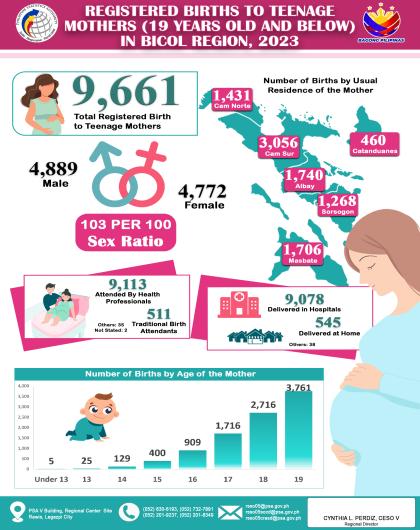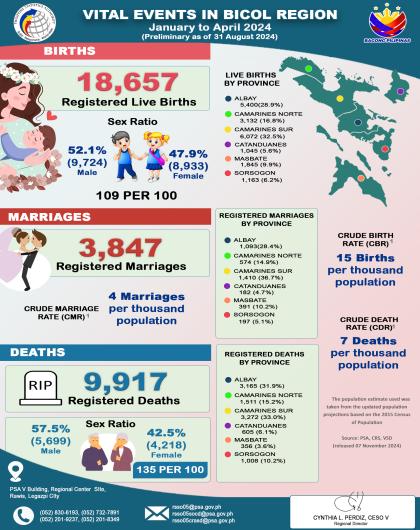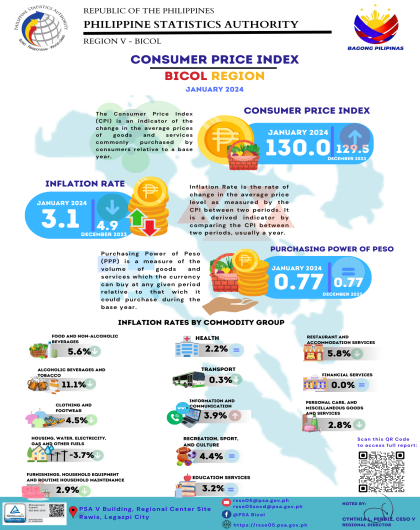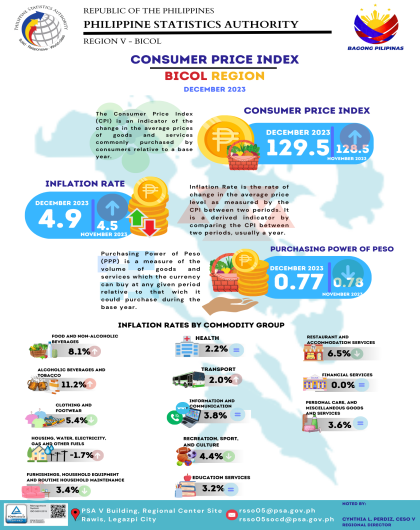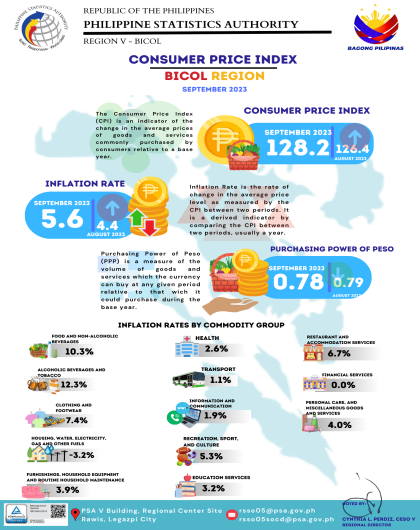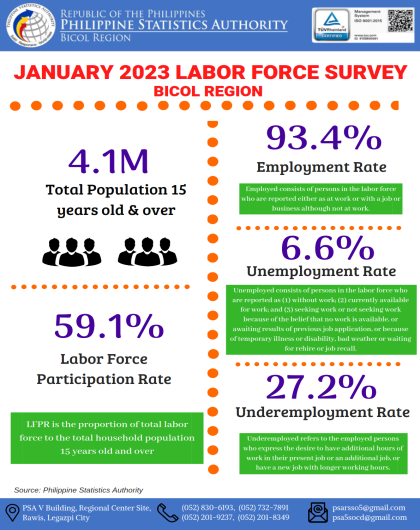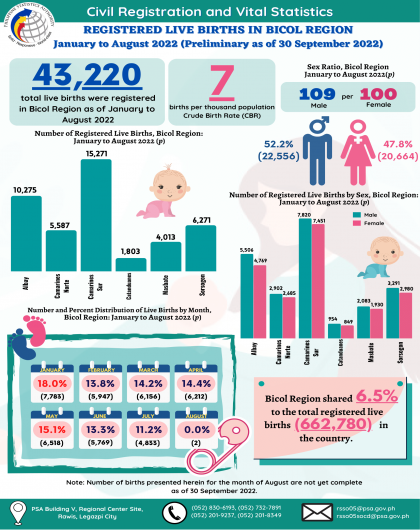

Inflation, All Items
Inflation in the province of Sorsogon moved slower to 0.6 percent in January 2024, from 3.3 percent in the previous month. In January 2024, inflation was posted at 6.4 percent. This brings the provincial average inflation rate from January to December 2024 at 0.6 percent. (Tables A and B, and Figure 1)
The downward trend in the inflation was due to the slower annual increase in the indices for Food and non-alcoholic beverages, 4.0 percent;
Moreover, the following commodity group indices also moved slower:
- Clothing and footwear, 2.3 percent;
- Housing, water, electricity, gas and other fuels, -12.0 percent;
- Furnishings, household equipment and routine household maintenance, 4.2 percent;
- Health, -0.9 percent; e. Transport, -1.5 percent; f. Recreation, sport and culture, 3.2 percent;
- Restaurants and accommodation services, 4.9 percent; and
- Personal care, and miscellaneous goods and services, 3.0 percent;
Meanwhile, Alcoholic beverages and tobacco moved slightly faster this month with 14.0 percent from 13.9 percent. Other commodity groups not mentioned remained at same index level as last month.
Food Inflation
Food inflation in the province moved slower at 4.0 percent from 9.9 percent on previous month. In the same month of the previous year, food inflation was noted at 4.8 percent.
Mixed movements in the annual growth rates of the indices for food were observed during the month. Lower inflation were seen in the indices of the following food groups:
- Meat and other parts of slaughtered land animals, 0.0 percent;
- Fish and other seafood, -4.9 percent;
- Milk, other dairy products and eggs, 4.1 percent.
- Oils and fats, -9.4 percent;
- Vegetables, tubers, plantains, cooking bananas and pulses, -21.5 percent; and
- Sugar, confectionery and desserts, -1.2 percent.
In contrast, annual growth rates of the indices were higher in the following commodity groups:
Fruits and nuts, 13.5 percent;
- Cereals and cereal products, 21.7 percent;
- Fruits and nuts, 14.3 percent; and
- Ready-made food and other food products n.e.c, 4.2 percent.
Purchasing Power of the Peso
The purchasing power of peso (PPP) in the province of Sorsogon was at 0.80 pesos this month. This means that a peso in 2018 is worth 80 centavos in January 2024. The PPP last month and a year ago was also at 0.80 pesos.


COMPONENTS OF CPI:
A. Base Period
The reference date or base period is the benchmark or reference date or period at which the index is taken as equal to 100. Starting February 2022, the base period is 2018.
B. Market Basket
A sample of the thousands of varieties of goods purchased for consumption and services availed by the households in the country selected to represent the composite price behaviour of all goods and services purchased by consumers.
C. Weighting System
The weighting pattern uses the expenditures on various consumer items purchased by households as proportion to total expenditure.
D. Formula
The formula used in computing the CPI is the weighted arithmetic mean of price relatives, the Laspeyre’s formula with a fixed base year period (2018) weights.
E. Geographic Coverage
CPI values are computed at the national, regional, and provincial levels, and for selected cities.
INFLATION RATE
The inflation rate is the annual or monthly rate of change of the CPI expressed in percent. Inflation is interpreted in terms of declining purchasing power of money.
HEADLINE INFLATION RATE
The headline inflation rate refers to the rate of change in the CPI, a measure of the average standard “basket” of goods and services consumed by a typical family.
YEAR-ON-YEAR INFLATION RATE
Year-On-Year Inflation Rate is the annual percentage change of CPI. For example, the percentage change of CPI between August 2023 and August 2024.
MONTH-ON-MONTH INFLATION RATE
Month-On-Month Inflation Rate is the monthly percentage change of CPI. For example, the percentage changes of CPI between August 2024 and July 2024.
PURCHASING POWER OF PESO (PPP)
The purchasing power of peso (PPP) shows how much peso in the base period is worth in the current period. It is computed as the reciprocal of the CPI for the period under review multiplied by 100.
For example, the PhP 1.00 in 2018 is valued only at PhP 0.78 in 2023.

